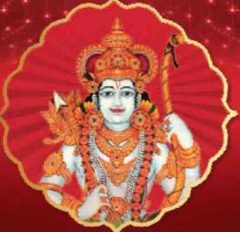There are many sub-divisions within the Pulluva community. The majority among them are called Nagampatikal (People who sing snake-songs). There are pulluvars who are not Naagampatikal, as well. They are known as Pretampatikal (People who sing ghost songs), Most of the art forms of the Pulluvar are ritualistic. Most of their songs are related to worship,ritual,custom and exorcism. The pulluva art is expressed in the background of snake-worship, ghost worship and magic.
The song conducted by the pulluvar in serpent temples and snake groves is called Sarppapaattu, Naagam Paattu, Sarpam Thullal, Sarppolsavam, Paambum Thullal or Paambum Kalam. The main aspects of this are Kalamezhuthu (Drawing of Kalam, a ritual art by itself), song and dance.The women perform the serpent dance(Sarpam Thullal). Austerities start seven days or nine days prior to the day of the dance. Once they start the austerities they themselves prepare food. They avoid eating certain food items that are considered to be impure.
The pandal where the serpent dance takes place is adorned with palm leaves, granium flowers, jasmine flowers, chrysanthemum indicum, champaka, lotus, banyan leaf, betel leaf, ripe arecanut and branches of coconut flowers. The form of the serpent is drawn with rice and colour powder. The people who represent the serpent clan come to the decorated kalam (the field where the form of the serpent is drawn) in a certain specific order. They are Naagaraajaavu, Naagayakshi, Sarppayakshi, Maninaagam, Erinaagam, Karinaagam, Kuzhinaagam, Paranaagam and Kanyaavu.
The serpents are worshipped in front of the Kalam and are offered Noorum Paalum (Lime and Milk). After the pooja, the head of the family which conducts the Sarppam thullal gives bunches of coconut flowers to the performers who start dancing rhythmically. They are supposed to represent the serpent gods, who accept offerings and grant boons to the devotees. The intensity of the dance heightens gradually. It is believed that prophesies which the dancer gives at the point of heightened intensity of the dance usually comes true. They fall on the floor in a trance and rub off the Kalam at the end.
